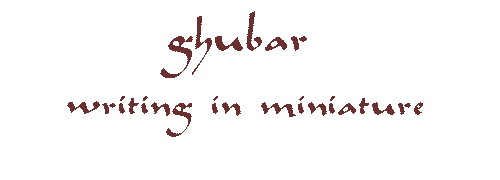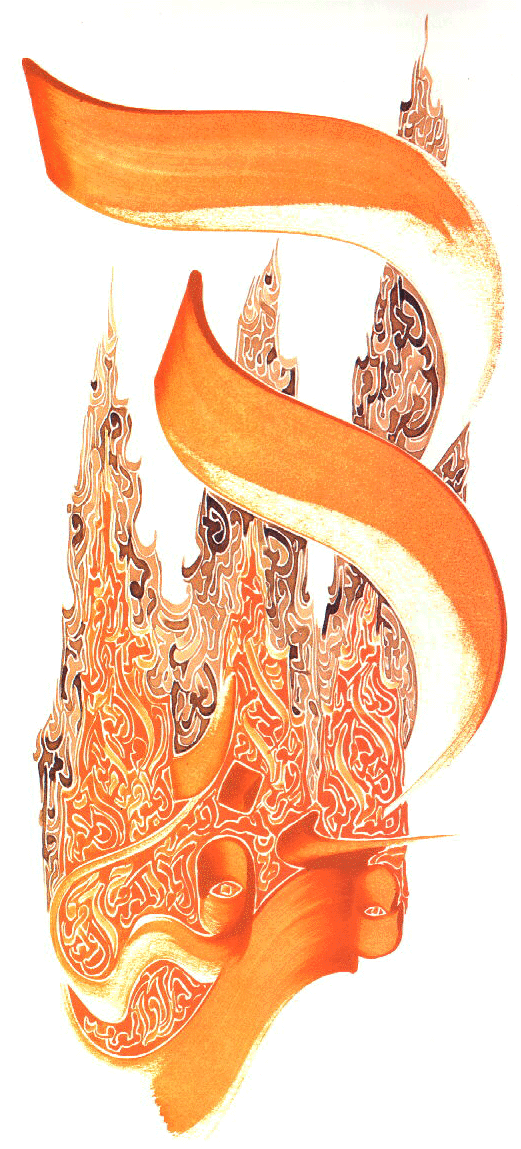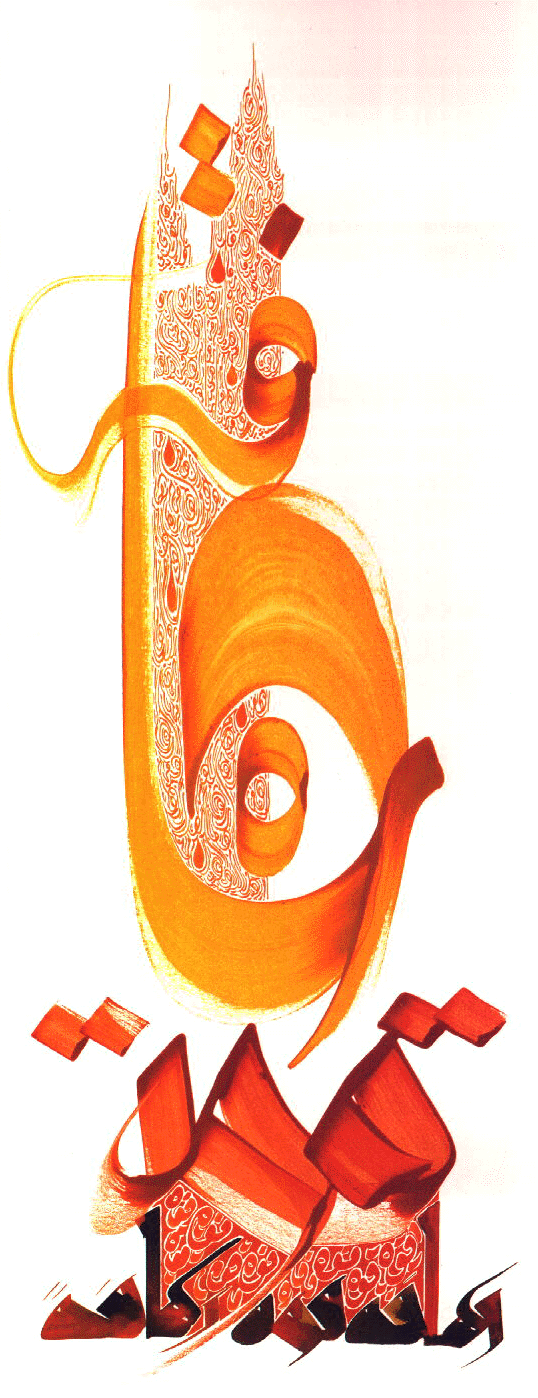

Originally designed for messages being sent by carrier pigeon, ghubar script compresses information into the smallest possible space. The technique involves writing minuscule inscriptions that usually measure about 1.3 millimeters in height, and rarely exceed 3 millimeters. Apart from its postal function, ghubar was used by calligraphers in three ways: for the production of scrolls; for esoteric, talismanic and magical writings; and for copies of the Qur’an.
Ghubar was very important in the case of scrolls used for a magical purpose. By reading out the inscriptions written in larger script one transmitted the power of the ‘hidden’ text in ghubar, either written within the larger letters or as the background defining them.
When calligraphers utilized ghubar to copy the Qur’an, clarity was of the greatest importance. The script was written in its least ambiguous form, with ample spacing between words and verses. Qur’anic verses had to be clear and legible because distorting sacred text is unacceptable.

![]()

![]()


![]()
